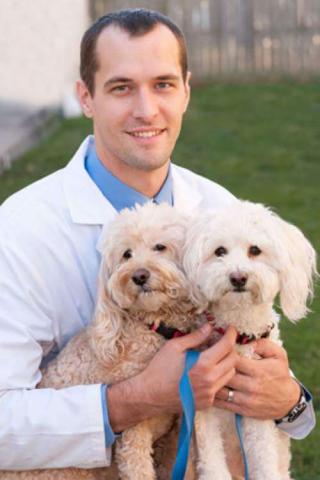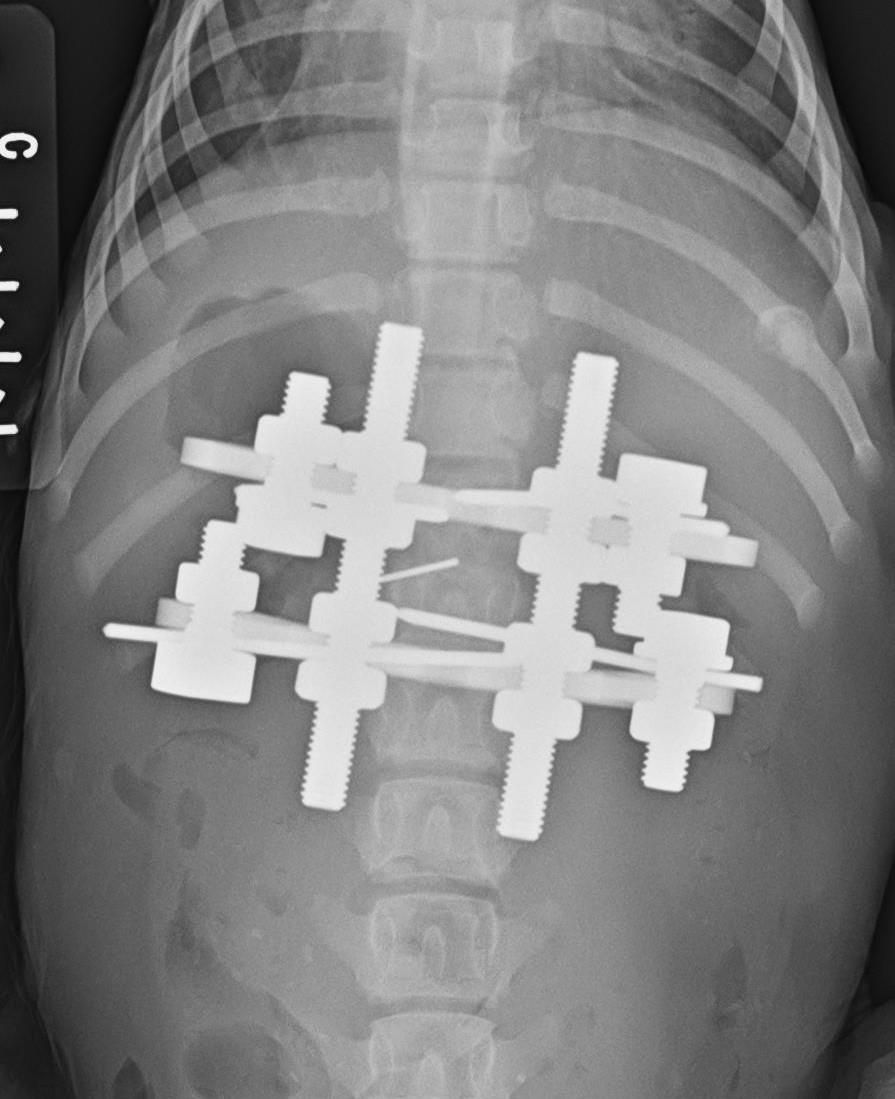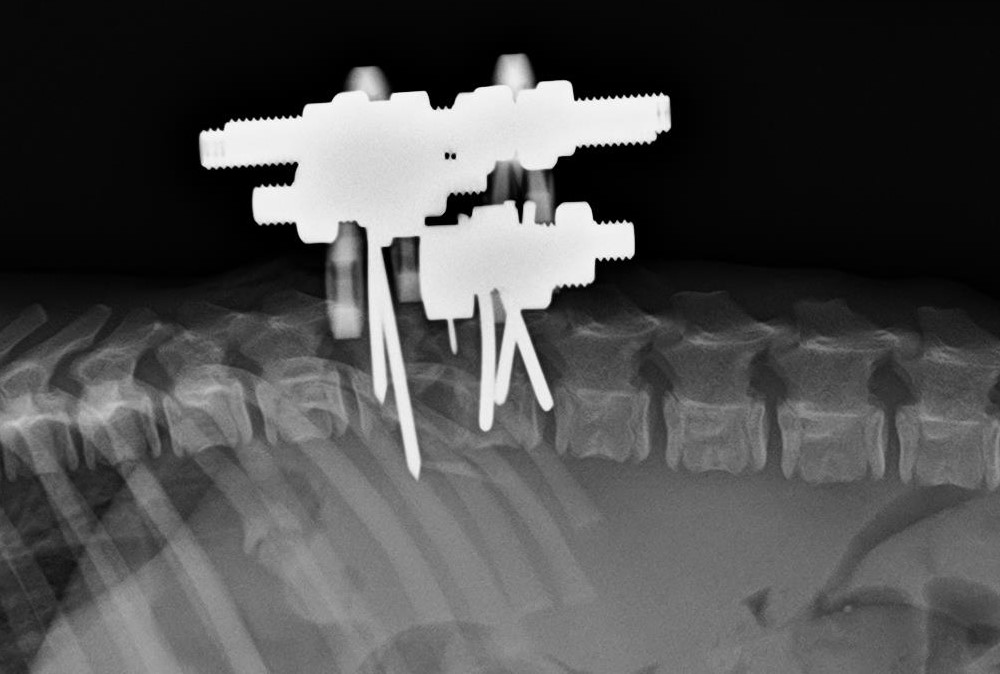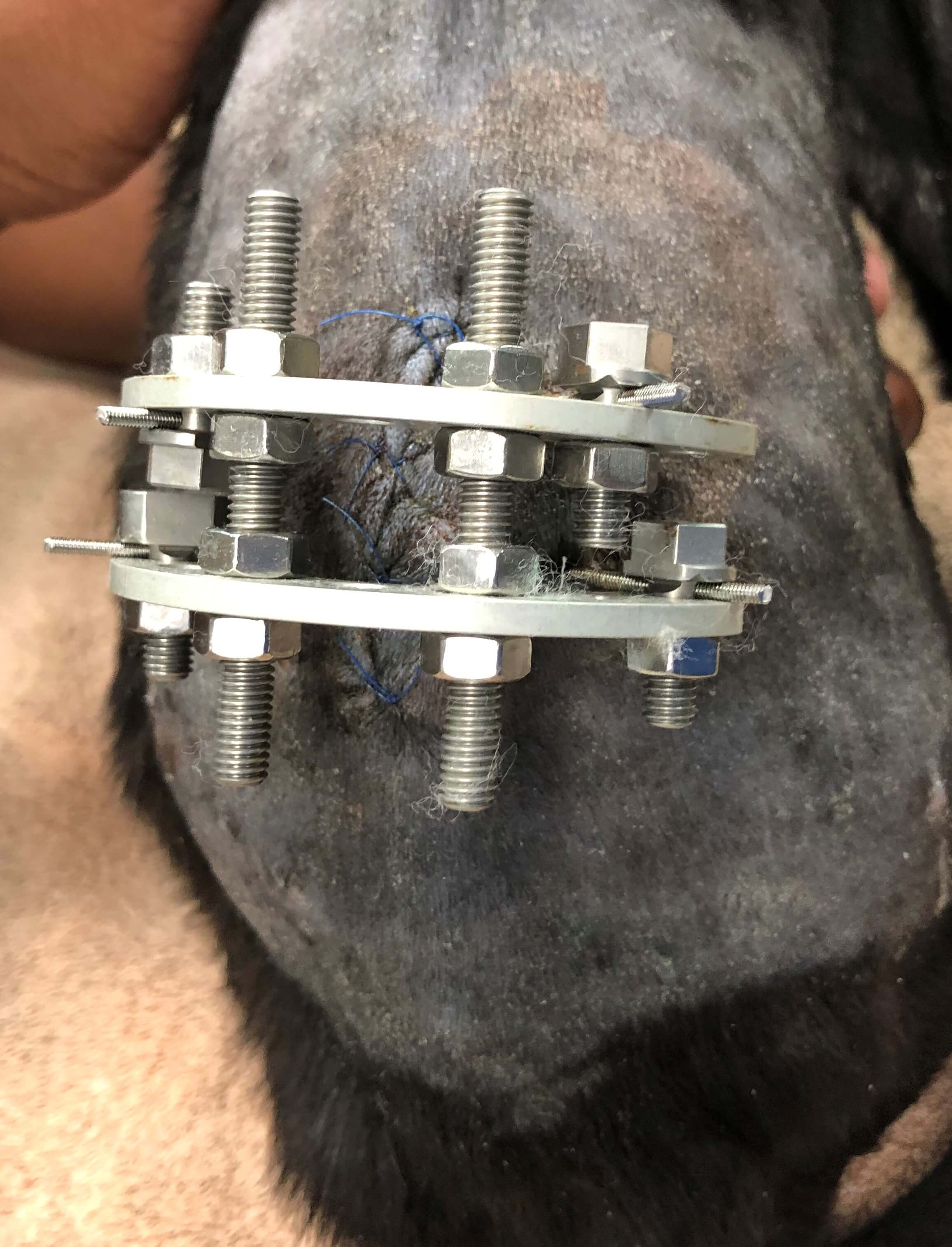
by: John Bevan, DVM, DACVS-SA
BINGO
Bingo, a 3-month-old, 8 lbs, FI GSD mix, was presented to CTVSEH for treatment of a spinal fracture. Bingo was found on the side of the road, presumably hit by a car. On presentation, Bingo was non-ambulatory with UMN paraplegia but intact pain sensation bilaterally. Radiographs revealed a fracture of the caudal aspect of the vertebral body of T13 with significant displacement of the spine.
Advances in technology and equipment provide the surgeons at CTVSEH with numerous options for repair of these fractures that can be tailored to the patient’s specific needs. In this case, we knew that Bingo would have substantial bone growth so leaving implants (pins and bone cement) in place could cause growth and biomechanical problems in the future. We also considered her small size and relatively “soft” young bones.
Given these factors, we decided to repair her fracture in a minimally invasive manner with an external skeletal fixator (ESF) using spinal arches. Biologic osteosynthesis (aka minimally invasive fracture repair) is a concept of fracture healing based on minimal disruption of the soft tissues around a fracture. Iatrogenic vascular damage to the bone fragments can delay or complicate bone healing and can be avoided by closed reduction and placement of an external fixator. The other major benefit of an ESF is the versatility, allowing us to make a custom frame for Bingo’s specific size and body shape. An additional benefit of the ESF is that all of the implants can be removed easily once the fracture has healed.
Bingo recovered well from surgery and was walking on her own within a week after surgery.






